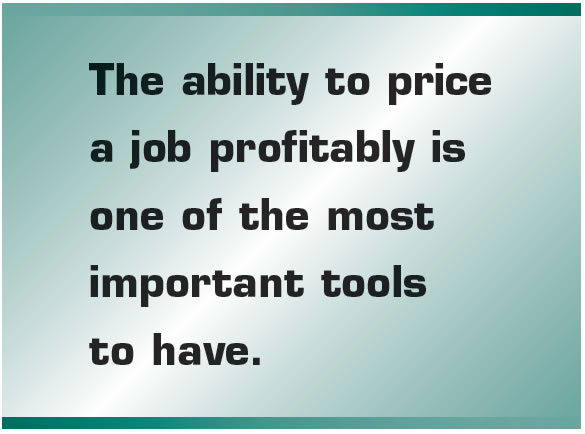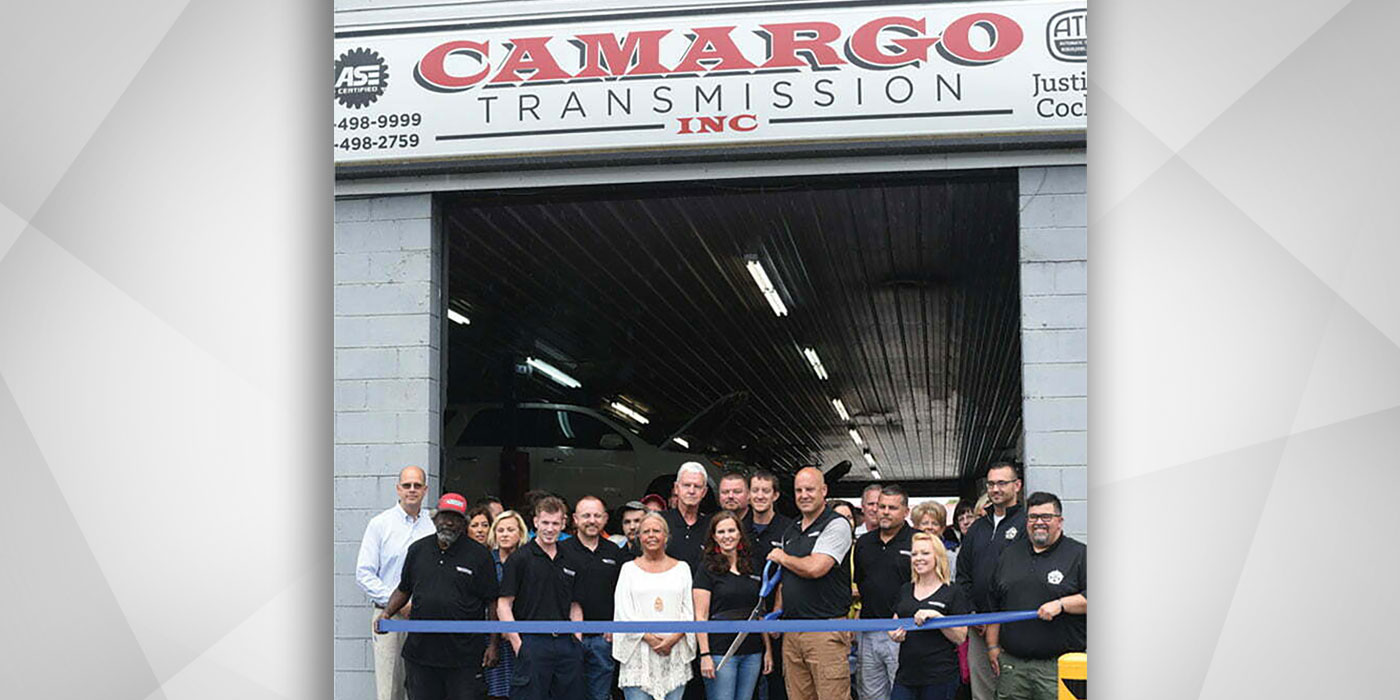
It’s Your Business
- Author: Terry Greenhut
- Subject Matter: Shop management
- Issue: Knowing when a job is profitable
Tools for the Excellent Manager
12th in a series
Ever tried fixing a car with not enough tools or the wrong ones? It’s hard, if not impossible, to do it right. The same goes for managing a business. If you aren’t properly equipped you probably won’t do a very good job. In management the tools are quite different. There are no wrenches or hammers. The tools consist of what you’ve learned and how you apply that knowledge.
Since most shop owners, like other small business entrepreneurs, started their enterprise because they had a talent for producing the finished job or product and the drive to take the next step to have a business of their own, their education was much more on the technical side of the operation than the business side. They may have learned how to acquire the equipment, tools and parts they need, along with how to get the job done, but most had no formal education when it came to selling their products or the intricacies of managing a business profitably. Anything they did learn about management was probably from watching a previous employer and often copying what they witnessed without really knowing if it was right or wrong.
In spite of all this, many startups do fairly well in the beginning primarily because the owner is providing most of the labor him or herself. They may or may not be drawing a paycheck and there isn’t usually much extravagant buying taking place. They put in as many hours as it takes to get the job done, usually far more than they should. They often don’t make much if any profit in the beginning because they don’t really know how to price their work properly or how to buy right, but because of a whole lot of sweat equity they are able to keep it going.
If they are producing a good product and their advertising and word of mouth is working, the business starts to grow to the point where the owner just can’t do all the jobs that need to be done without help. This is a very critical point. It’s the point at which the operation goes from “shade tree” to a real business. Now there will be hiring, payroll, accounting and tax problems with which to deal. Customer relations and warranty issues will come into play, and there will be all kinds of government regulations with which to comply.
One of the first and most important decisions the owner has to make is which side of the business to work in. Many opt to stay on the production side because that’s where their heart is and that’s where they are the most comfortable, and hire people to work the front office. Others will hire technicians to do the work and try to run the business operations themselves. The third group tries to run the business from behind a workbench. All three have their pitfalls.

If the owner is good at the production side and or doesn’t feel that he or she possesses the skills or want to do the necessary management tasks they will try to find people who can. The danger here of course is that they are turning over the handling of the money and everything related to it to people they may not know how to monitor. It’s sad to say but just like in the old detective movies where the butler always did it, in business when the money disappears often it is the accountant or the bookkeeper who realized that the owner wasn’t watching and absconded with the money.
If the owner is going to run the business side and doesn’t yet know how, he or she needs to take some courses either on line or in person to learn the basics of accounting, bookkeeping, marketing, advertising, human relations, customer service, and sales. Other than that they should try to bring in a consultant to teach them what they need to know and help them set up systems that make sense for their business.
The toughest option of all and the one that a high percentage of owners in the auto repair business choose is to run the business from behind the workbench. They want to work in the shop at what they love and at the same time run the show. Often they do it because they don’t feel the business is generating enough revenue to afford to pay any non-productive workers. It’s a lot of work and very difficult to stay focused on so many varied tasks at the same time, which means that something or everything will probably suffer.
Communication
The first and foremost tool of a good manager is the ability to communicate. It’s a two-way street. You have be able to get your ideas across and at the same time be able to actively listen to the thoughts of others. Sam Walton, the founder of Walmart used to say that he got more good ideas by walking through his stores asking and listening to what his clerks and managers had to say than he could ever dream up on his own. It makes sense. Those are the people on the front line dealing with customers and other employees every day. Who would know better than they what’s needed in the stores?

When I had my transmission businesses I spent most of my day in the shops. I didn’t micromanage my people. I worked with them and took every opportunity to provide training. When a rebuilder or an installer would call me over and ask me how to do something I would turn around and ask, “How do you think it should be done?” If they didn’t have an answer or were way off base I would say, “Let’s figure this out together logically.”
By including the employee in the process he or she was much more likely to remember how to do it next time and hopefully learn to think through more problems on their own. When you just tell a person how to do something it has a tendency to go in one ear and out the other. When you include her or him in the thinking process and allow them to physically do at least some of the work, it sticks.
It’s the same thing when a tech has a comeback. Sure you could probably jump in and fix the problem in no time, but that isn’t a learning experience. Letting the tech suggest what went wrong and how he or she would avoid it in the future will pretty much guarantee that it won’t happen again.
Communicating with customers during the repair process makes for much happier customers. Being interrupted by customers calling at inconvenient times just to check on the progress of their repairs does nothing but slow down the process. If you communicate up front that they should not call but that you will call them with updates as they occur, and then you actually do make the calls at your convenience, you and they will be much happier.
One update that’s very important to customers is any price change that happens because more work needs to be done than was first anticipated or there is an increase in the cost of parts for whatever reason. The five o’clock surprise is one of the worst things you can do to a customer followed closely by not calling to let them know that the job you promised to be ready today isn’t going to be and there is no time for them to make other arrangements. Those two will kill your credibility quicker than having the job bounce three times and we all know how bad that can be.
Of course, we know how important mastering verbal communication is when it comes to selling jobs. If you can’t talk a caller into the shop who is describing a problem on the phone and possibly price shopping it all over town you aren’t going to do very much business. Without good communication skills and knowing the right things to say at the appropriate times you will likely be doomed to quoting “take it or leave it” prices pretty much every time the phones rings. That will instantly lose 80% of your callers and leave you with only the 20% you low-balled to get them in the door, and you can’t make a living on them.
Profit dollars
Many in our business feel that they are really good at selling, but the question is, when they sell something is it profitable? Without a profit there’s no reason to make the sale; after all we are not in business to exchange dollars. We are there to make the profit dollars that keep the ship afloat. Profit dollars not only compensate the owner for the investment in money and time, but they also pay for the equipment, tools, and substantial inventory that makes the work go more quickly, smoothly and with more precision.

Too many owners and managers in our business unfortunately don’t know when a job is profitable. Often it’s because they never learned how to work the numbers, because they rely on the parts supplier to tell them what their retail price should be, or because they are pricing off their competition who they hope knows if the numbers are right. Then there are those who find out what the competitor’s price is and do everything they can to beat it, even if it means not making much if any profit.
The ability to price a job profitably is one of the most important tools to have. It often takes time and some research to price out a job which is why you can’t just quote numbers on demand. Jobs need to be priced on a computer based on all the costs involved including possible warranty costs and the profit the company needs to make.
What is the true cost of an employee per hour, not just what you pay them? What should you charge for labor? How much should you mark up parts? What percentage of work comes back and needs to be redone? How do all the other expenses of the business come into play? An owner needs to know all of those numbers to develop a labor rate and a parts markup that makes sense.
I would never presume to tell anyone what to charge for their services. It’s as individual as each one of you are, but I will tell you that the only way to be successful in this business is to know your numbers and base your prices on them and nobody else’s.
If you figure out your numbers and then are afraid to ask for the proper price or have tried but can’t seem to get it from your customers, then your focus needs to be aimed at your sales skills that we will discuss in another installment.
Next time we’ll take a look at numbers, what they mean, and how to make them work for you.














